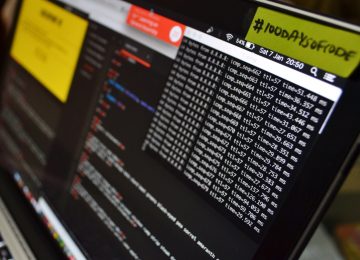The 2024 US Election: Navigating the New Frontier of Potential AI-Driven Cyber Threats

As the 2024 US presidential election approaches, the potential for cyber threats looms larger than ever. The rise of artificial intelligence (AI) has added a new dimension to the cybersecurity landscape, posing unprecedented challenges to the integrity of electoral processes. AI's capabilities can be exploited to conduct sophisticated cyberattacks, manipulate public opinion, and disrupt democratic institutions. It is imperative that election officials and cybersecurity experts develop robust strategies to protect against these evolving threats.
Table of Contents
The Evolving Cyber Threat Landscape
In recent years, cyber threats have become a critical concern for elections worldwide. Malicious actors, including nation-states and cybercriminals, have increasingly targeted electoral systems to influence outcomes, sow discord, and undermine public trust in democratic processes. These threats range from hacking into voter databases and election infrastructure to spreading disinformation and conducting social engineering attacks.
The introduction of AI into this already complex threat landscape has significantly raised the stakes. AI can automate and enhance various aspects of cyberattacks, making them more efficient, scalable, and difficult to detect. This technological leap presents a formidable challenge for election security.
How AI Can Be Weaponized in Elections
- Automated Disinformation Campaigns: AI can generate and spread false information at an unprecedented scale. Sophisticated AI algorithms can create highly convincing fake news articles, social media posts, and even deepfake videos. These tools can be used to influence public opinion, discredit candidates, and create confusion among voters.
- Deepfakes: AI technology can produce realistic but fake videos and audio recordings of political figures. Deepfakes can be used to spread false information, damage reputations, and manipulate public perception. The potential impact of a strategically released deepfake video during an election cycle could be catastrophic.
- Phishing and Social Engineering: AI can automate and personalize phishing attacks, making them more convincing and harder to detect. By analyzing vast amounts of data, AI can craft targeted messages that trick individuals into divulging sensitive information or clicking on malicious links.
- Hacking and Infrastructure Attacks: AI can be used to identify vulnerabilities in election infrastructure more quickly and effectively than traditional methods. Automated tools can scan systems for weaknesses, launch attacks, and adapt in real-time to countermeasures.
Protecting the 2024 Election from AI-Driven Cyber Threats
Given the potential for AI to be weaponized against the electoral process, officials must adopt a multifaceted approach to safeguard the 2024 election. Here are key strategies that should be implemented:
- Enhanced Cybersecurity Measures: Election systems must be fortified against cyberattacks. This includes regular security audits, vulnerability assessments, and penetration testing. Implementing multi-factor authentication, encryption, and robust access controls can help protect sensitive data and systems.
- AI-Driven Defense Tools: Just as AI can be used to launch attacks, it can also be leveraged for defense. AI-powered cybersecurity tools can detect anomalies, predict potential threats, and respond to attacks in real-time. These tools can provide an additional layer of protection for election infrastructure.
- Public Awareness Campaigns: Educating the public about the risks of disinformation and deepfakes is crucial. Voters should be informed about how to recognize and report suspicious content. Public awareness campaigns can help build resilience against manipulation efforts and reduce the impact of false information.
- Collaboration and Information Sharing: Effective election security requires collaboration between federal, state, and local authorities, as well as partnerships with the private sector. Information sharing about emerging threats and best practices can enhance the collective ability to defend against cyberattacks.
- Regulation and Legislation: Policymakers should consider new regulations to address the unique challenges posed by AI-driven threats. This could include laws requiring transparency in political advertising, criminalizing the malicious use of deepfakes, and establishing standards for election security.
- Continuous Monitoring and Incident Response: Establishing a robust monitoring system is essential for detecting and responding to cyber threats in real-time. Incident response teams should be prepared to act quickly to mitigate the impact of any attacks. This includes having contingency plans in place for various scenarios.
- Training and Preparedness: Election officials and staff should receive regular training on cybersecurity best practices and threat awareness. Preparedness exercises, including simulations of potential attack scenarios, can help ensure that personnel are ready to respond effectively.
What This All Means for November
The 2024 US election faces a new frontier of cyber threats, driven by the rise of AI. The potential for AI to be used in disinformation campaigns, deepfake creation, phishing attacks, and infrastructure hacking presents a significant challenge to the integrity of the electoral process. To protect the upcoming election and future ones, officials must implement comprehensive cybersecurity measures, leverage AI-driven defense tools, educate the public, foster collaboration, and enact appropriate regulations.
The security of our democratic institutions depends on our ability to adapt to these evolving threats. By taking proactive steps now, we can help ensure that the 2024 election is conducted with integrity, transparency, and resilience against the dangers posed by AI-driven cyber warfare.








